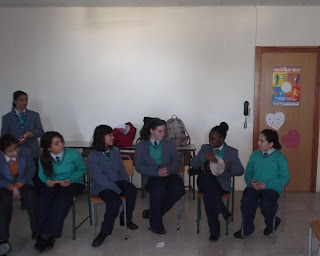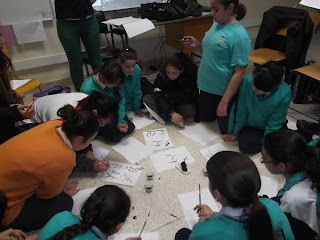Jien jismni Kelsey Alakkad u s-sena l-oħra hadt sehem fil-grupp tal-‘Living
Diversity’. Ħadna ħafna gost ilkoll
flimkien, speċjalment meta kellna xi attivita’.
Aħna tgħallimna dwar ħafna pajjiżi u kulturi differenti. Dan jghinna biex insiru iktar tolleranti lejn
xulxin. Aħna lgħabna logħba tal-Filippini,
sajjarna ħafna ikel minn tradizzjonijiet oħra, għamilna bazaar fuq l-ikel u
wkoll morna ‘Chinese Garden’ u għamilna attivita’ hemmhekk. Darba għamilna reċta u għamilnieha quddiem
sħabna. Morna wkoll l-Universita’ għax
kien hemm ġurnata ddedikata għal Kuwait.
Din l-espeprjenza qatt ma ninsiha għax doqna l-ikel tagħhom, ilbisna
l-ilbies u l-ġojjellerija u xi ftit minna għamlu l- ‘hennah’. Din hija zebgħa ta kulur kannella fl-aħmar u
tintuża biex jagħmlu disinnji fuq il-ġilda, din mhix permanenti bħal tattoo
imma wara xi gimagħtejn titlaq. Dan
il-grupp ser jerġa jibda jiltaqa’ u nħeġiġkom li tiġu.
Hi I am Samantha Seychell and I want to tell you about our club ‘Living
Diversity’. In the Living Diversity we learn
about different cultures and how to interact with people from different
backgrounds. Even though some of us are
from different countries with different cultures it does not mean that we can’t
be friends.
The club does lots of activities.
For example when we went to the University of Malta and some girls got
their name written in Arabic on their hand with henna (it is like a tatoo but
it goes away). Also as another activity
we went to the Chinese Garden and we looked at the Chinese architecture and ran
around the place.
We have lots of fun in living diversity and we look forward for new members
in our club.


































